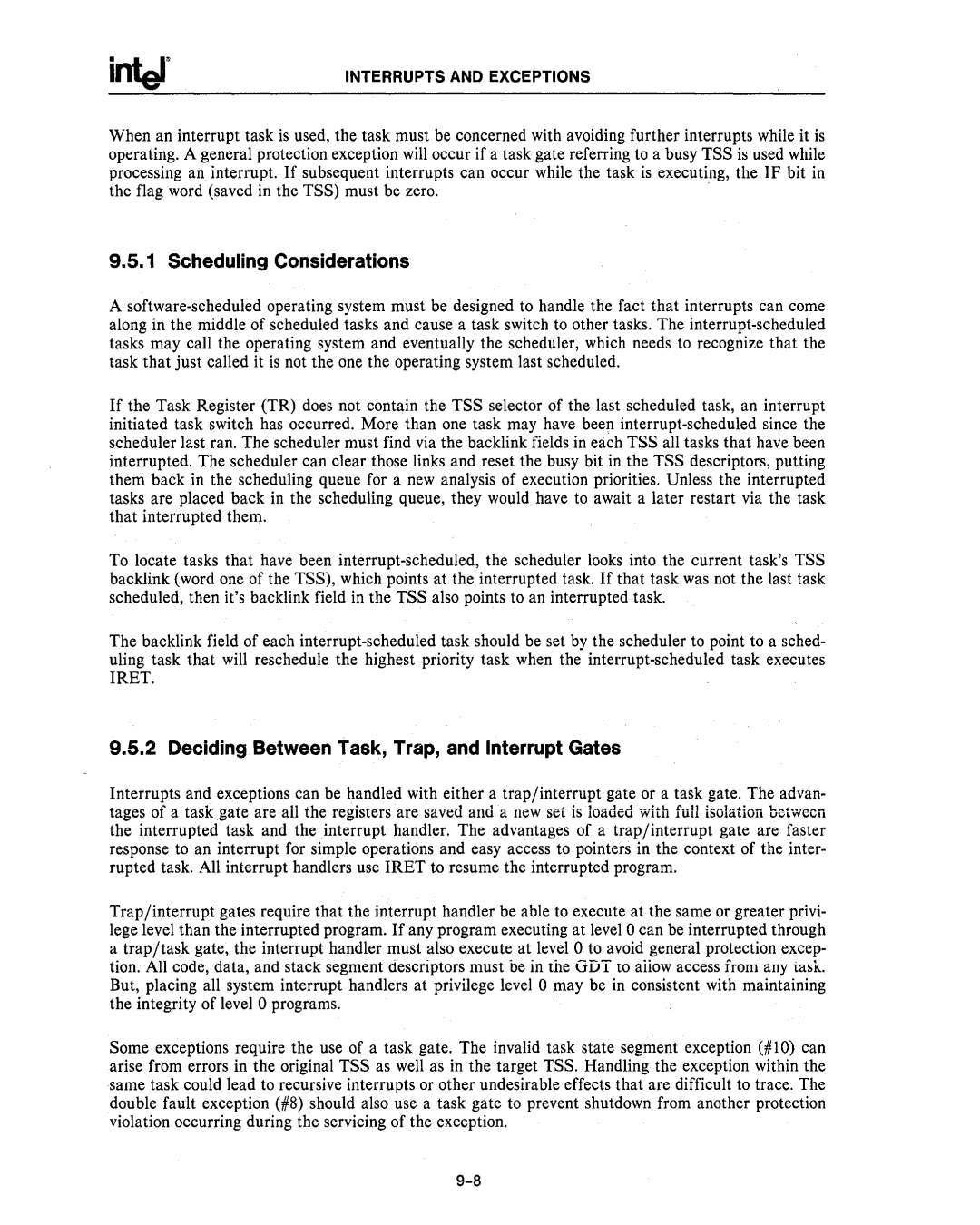
INTERRUPTS AND EXCEPTIONS
When an interrupt task is used, the task must be concerned with avoiding further interrupts while it is operating. A general protection exception will occur if a task gate referring to a busy TSS is used while processing an interrupt. If subsequent interrupts can occur while the task is executing, the IF bit in the flag word (saved in the TSS) must be zero.
9.5.1 Scheduling Considerations
A
If the Task Register (TR) does not contain the TSS selector of the last scheduled task, an interrupt initiated task switch has occurred. More than one task may have been
To locate tasks that have been
The backlink field of each
9.5.2 Deciding Between Task, Trap, and Interrupt Gates
Interrupts and exceptions can be handled with either a trap/interrupt gate or a task gate. The advan- tages of a task gaie are ail the registers are saved and a new set is loaded with full isolation between the interrupted task and the interrupt handler. The advantages of a trap/interrupt gate are faster response to an interrupt for simple operations and easy access to pointers in the context of the inter- rupted task. All interrupt handlers use IRET to resume the interrupted program.
Trap/interrupt gates require that the interrupt handler be able to execute at the same or greater privi- lege level than the interrupted program. If any program executing at level 0 can be interrupted through a trap/task gate, the interrupt handler must also execute at level 0 to avoid general protection excep- tion. All code, data, and stack segment descriptors must be in the GuT to aiiow access from any task. But, placing all system interrupt handlers at privilege level 0 may be in consistent with maintaining the integrity of level 0 programs.
Some exceptions require the use of a task gate. The invalid task state segment exception (#10) can arise from errors in the original TSS as well as in the target TSS. Handling the exception within the same task could lead to recursive interrupts or other undesirable effects that are difficult to trace. The double fault exception (#8) should also use a task gate to prevent shutdown from another protection violation occurring during the servicing of the exception.
